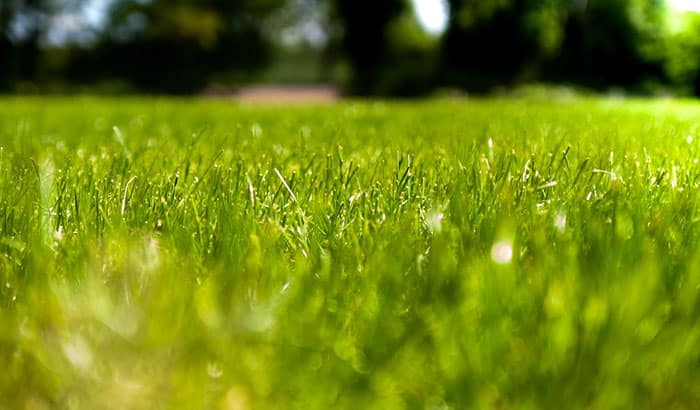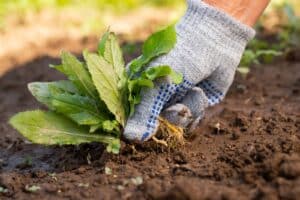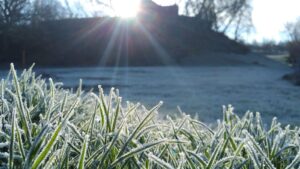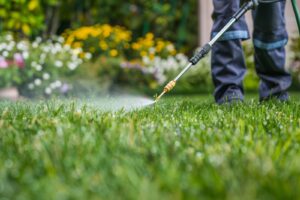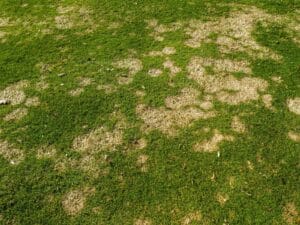Grubs are a common pest that can cause significant damage to lawns and gardens. These small, worm-like creatures are the larvae of various types of beetles, and they feed on the roots of grasses and other plants.
Grubs can be found in many parts of the world, and they’re an equally common problem in Utah, where the climate and soil conditions are ideal for their growth and development.
A grub infestation can quickly turn a once-healthy lawn into a patchy, brown mess if left unchecked. Signs of a grub infestation include brown or yellow patches of grass, wilting or dying plants, and loose or spongy soil.
In severe cases, grubs can kill entire sections of a lawn or garden, leaving homeowners with costly and time-consuming repairs.
Fortunately, there are steps homeowners can take to prevent and control grub infestations in Utah. By understanding the lifecycle of grubs and the conditions that contribute to their growth, homeowners can take proactive measures to keep their lawns pest-free.
In this blog, we’ll take a closer look at grubs in general, as well as specific information for those dealing with grub infestations in Utah. From identifying the signs of a grub infestation to effective control measures and preventative strategies, we’ll provide everything you need to know to keep your lawn healthy and green.
So, whether you’re a seasoned gardener or a first-time homeowner, read on to learn more about these pesky pests and how to keep them at bay.
What Are Grubs?
Grubs are the larvae of various species of beetles, including Japanese beetles, June beetles, and European chafers. These pests are notorious for damaging lawns by feeding on grass roots, causing dead, brown turf patches. Grubs are typically white or cream-colored, with a distinct C-shaped body, and can grow up to an inch long.
The life cycle of a grub begins when an adult beetle lays eggs in the soil. The eggs hatch into tiny, white grubs that immediately start feeding on the roots of plants. As the grubs grow, they molt several times and eventually enter a pupal stage, where they transform into adult beetles.
The entire life cycle from egg to adult can take anywhere from one to three years, depending on the species of beetle and environmental conditions.
You can find several types of grubs in lawns throughout the United States. The most common are Japanese beetle grubs, which are found in the Midwest and Eastern United States. These grubs are large and can cause significant damage to lawns.
In Utah, white grubs are a common problem in lawns and gardens and can cause significant damage if left untreated.
May/June beetle grubs are also common in Utah and can cause similar damage to lawns and gardens. Masked chafer grubs are less common but still pose a threat to your lawn’s health.
What Time of Year Are Grubs a Problem?
The timing of a white grub infestation can vary depending on the species of beetle and environmental conditions. However, grubs generally tend to be a problem during the late summer and early fall months when they are actively feeding and growing.
The same applies to Northern Utah. In late summer and early fall, the eggs hatch into tiny grubs that immediately begin feeding on the roots of grass and other plants. As the grubs grow and mature, they continue to feed on the roots, causing significant damage to lawns and gardens.
It’s important to note that while late summer and early fall are the most common times for a white grub infestation, grubs can be a problem at any time of year. In warmer climates, grubs can be active year-round, while in colder regions, grubs may go dormant during the winter months and resume feeding in the spring.
Signs of Grub Infestation
A lawn with grubs is highly susceptible to damage, and it’s important to identify the signs of an infestation so that you can take action quickly. Here are some common signs that your lawn or garden may be infested with grubs:
- Dead or brown patches of grass: Grubs feed on the roots of grass, which can cause sections of your lawn to turn brown and die.
- Spongy or uneven soil: As grubs feed on grass roots, the soil can become loose and spongy, making it difficult to walk on.
- Increased bird activity: Birds are natural predators of grubs and may be attracted to your lawn if there are a large number of grubs present.
- Presence of adult beetles: If you see adult beetles in your lawn or garden, it’s a good indication that they have laid eggs and that grubs may be present.
In Utah, the most common signs of grub damage include dead or brown patches of grass and spongy or uneven soil. You may also notice an increase in bird activity or the presence of adult beetles, depending on the species of beetle and environmental conditions.
You can perform a simple test to determine if you have a lawn with grubs. Do the following:
- Use a shovel to cut a square foot of grass and soil from your lawn.
- Examine the roots for signs of feeding damage or the presence of grubs.
- Count the grubs in that patch you cut out.
If you see more than five grubs per square foot, you may have a serious infestation that requires treatment.
If you suspect that you have a lawn with grubs, it’s important to take action quickly to prevent further damage. There are a variety of treatments available, including insecticides and natural remedies, that can effectively control grubs and protect the health of your lawn.
How to Get Rid of Grubs
If you’ve identified a white grub infestation in your lawn or garden, there are several steps you can take to get rid of the grubs and prevent future infestations. Here are some effective methods for controlling grubs:
Apply insecticides: Insecticides are a popular and effective method for controlling grubs. There are many different types of insecticides available, including synthetic and organic options. Consult with a lawn care professional or visit your local garden center to choose the best insecticide for your needs.
Use natural remedies: Many natural remedies can help control grubs, including nematodes, milky spores, and diatomaceous earth. These natural remedies are often safer for the environment and can be a good option for those who prefer to avoid synthetic chemicals.
Aerate your lawn: Aerating your yard can help to reduce the number of grubs in your soil. Creating small holes in the ground allows air and water to circulate, making it more difficult for grubs to survive.
Practice proper lawn care: Maintaining a healthy lawn can help to prevent grub infestations. Make sure to water your lawn regularly, mow it at the correct height, and fertilize it as needed.
Seek professional help: If you have a severe grub infestation or are unsure how to control the grubs on your own, it may be best to seek the help of a professional lawn care company.
In Utah, it’s important to choose a treatment method that is appropriate for the species of beetle and environmental conditions in your area. Consulting with a lawn care professional or visiting your local garden center can help you choose the best treatment option for your needs.
By taking steps to control grubs and prevent future infestations, you can protect the health of your lawn and garden and enjoy a beautiful outdoor space all year.
How to Prevent Grub Infestations
Most practices that are effective in getting rid of grubs can also be used to prevent them. By practicing good lawn care habits, such as keeping your lawn healthy, avoiding overwatering, and removing thatch, you can help prevent grubs from taking hold in the first place.
Additionally, using natural predators, resistant grass varieties, and preventative treatments can all be effective strategies for preventing and controlling grub populations. So, whether you’re looking to prevent grubs or get rid of them, the key is to maintain a healthy, well-cared-for lawn or garden.
Keep Your Lawn Pest Free With Summit Lawn and Pest Control
Looking for the best lawn care and pest control services in Orem and Utah County? Look no further than Summit Lawn & Pest Control!
Our team of dedicated and experienced technicians is highly trained in all aspects of lawn care and pest control. Whether you’re dealing with stubborn weeds, pesky grubs, or unwanted pests in your home, we’ve got you covered.
At Summit Lawn & Pest Control, we take pride in providing top-notch service to our customers. We aim to keep your lawn healthy and vibrant while keeping your home free from unwanted pests. From preventing lawn disease to controlling insect infestations, we have the knowledge and expertise to keep your property looking and feeling great all year round.
Don’t let weeds, grubs, or pests take over your lawn and home. Contact Summit Lawn & Pest Control today here, or call us at 801-473-9926 to schedule an appointment and experience the best lawn care and pest control in Orem and Utah County. With our help, you’ll have the best-looking yard on the block!


